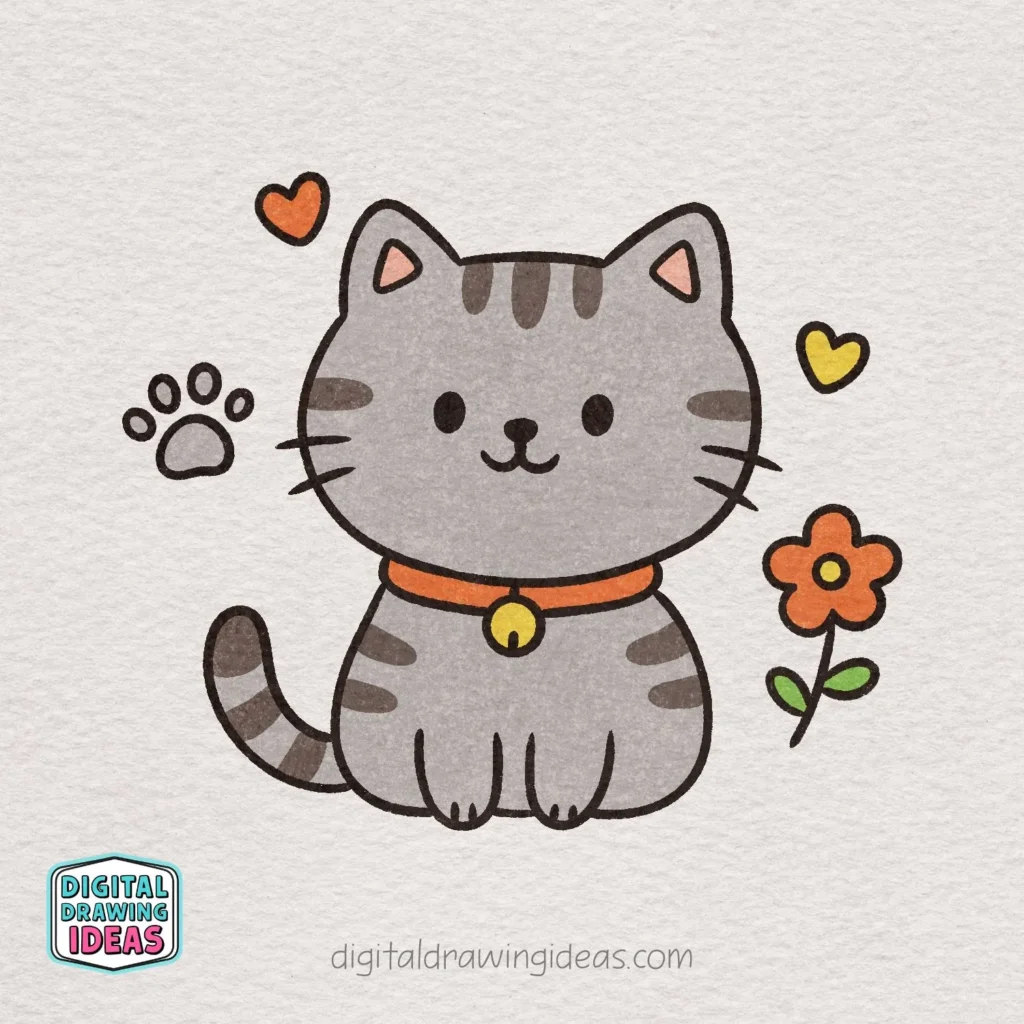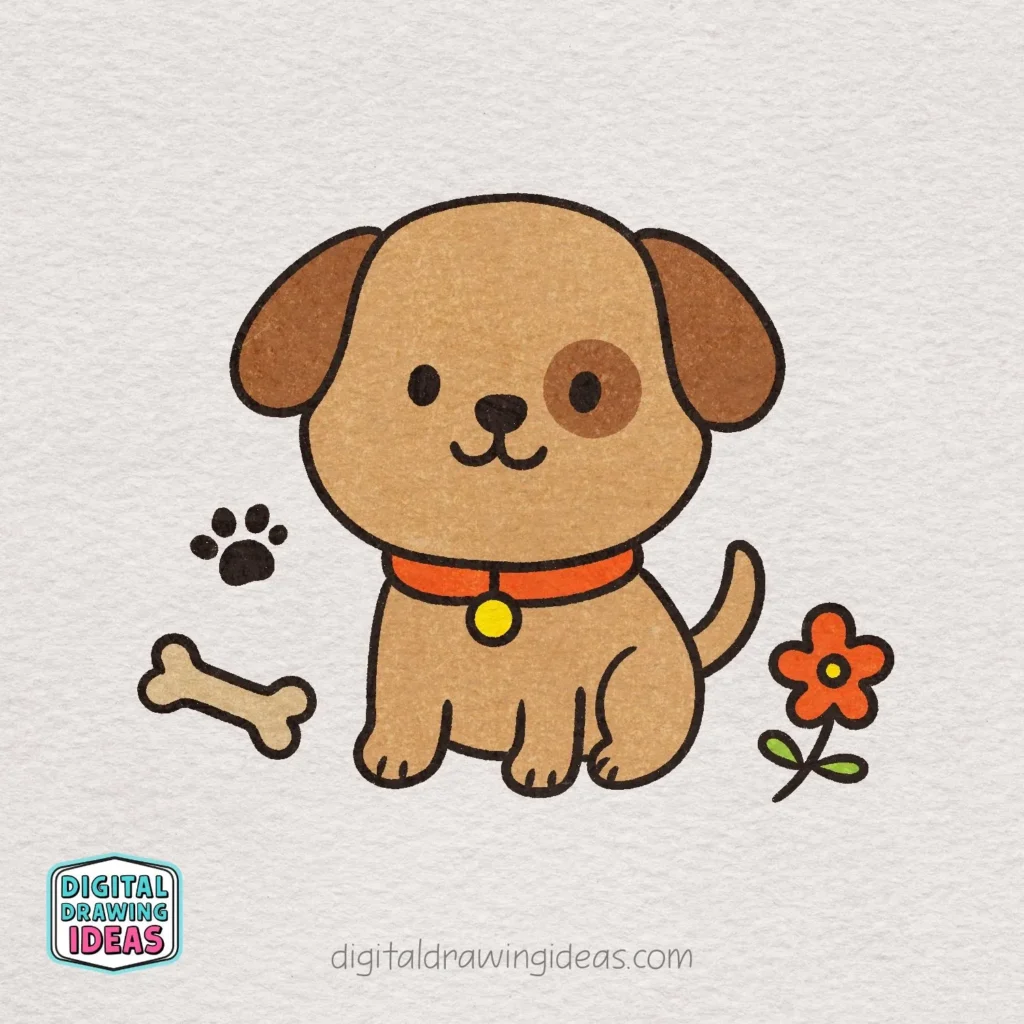Have you ever wanted to learn how to draw a lion but felt it might be too complicated? I used to feel the same way. Every time I looked at a majestic lion in a picture book or cartoon, I thought, “That mane looks impossible to draw!” But over time I realized that breaking the process into small, fun steps makes it not only easy but really enjoyable.
For me, drawing has always been a mix of play and relaxation. I love creating simple, cute animals because they remind me that art doesn’t have to be intimidating. If you’ve ever sat down with a pencil and worried that your circle looks a little wobbly, don’t stress—I’ve been there too, and honestly, those imperfections make your drawing even more charming.

In this tutorial, I’ll show you exactly how to draw a lion in 14 simple steps. These are the same steps I used for the drawings you’ll see below, so you’re getting my personal process straight from my sketchbook. By the end, you’ll have your very own cute lion with a fluffy mane and a big smile.
Step 1: Draw the Head Shape

Begin by drawing a large circle in the middle of your page. This circle will be the base of your lion’s head.
Try to keep your circle smooth, but don’t worry if it isn’t perfect—it will still look adorable in the end.
Step 2: Add the Face Details

Inside the circle, draw two small curved lines for the eyes to make them look gently closed.
Then add an oval nose in the center, and connect a short curved line below it with a little “smile” shape.
Keeping the eyes simple makes the lion look extra cute and calm.
Step 3: Draw the Ears

On each side of the head, draw a small curved shape that looks like a semicircle for the ears.
Place them near the top so they look balanced and cute. Making the ears slightly rounded gives the lion a softer, friendlier look.
Step 4: Add Inner Ears

Inside each ear, draw a smaller curved line that follows the shape of the outer ear. This makes the ears look more detailed and adds a soft, fluffy touch.
Keeping the lines simple will help the lion’s face stay cute and easy to draw.
Step 5: Outline the Mane

Around the circle, draw a big fluffy shape with soft curves all the way around.
This will be the lion’s mane, giving it that classic royal look. Keeping the curves round and even makes the mane look extra cute and balanced.
Step 6: Draw the Front Legs

From the bottom of the mane, draw two straight lines down and curve them into little “U” shapes for the paws.
Leave a small space between them to show that they’re two separate legs. Keeping the legs short and simple makes the lion look extra cute and chubby.
Step 7: Add a Back Leg

On the right side, draw a curved line that comes down and bends forward into another little paw shape. This leg should look similar to the front ones but placed slightly behind to show the lion’s body. Keeping it rounded makes the pose look friendly and soft.
Step 8: Connect the Body

Draw a simple curved line across the bottom, connecting the front and back legs. This forms the lion’s belly and completes the body shape.
A smooth, gentle curve makes the body look soft and rounded.
Step 9: Draw the Other Back Leg

Add a short curved line with a “U” shape underneath the body to create the second back leg. This leg should be tucked in a little to show that it’s behind the others.
Keeping it smaller helps the lion look balanced and standing firmly.
Step 10: Draw the Tail Tip

To the right of the body, sketch a small oval shape. This will be the fluffy tuft at the end of the lion’s tail. Keeping it simple and rounded makes the lion look extra playful and friendly.
Step 11: Add the Tail

Draw two curved lines connecting the body to the oval tip you sketched earlier. This creates the lion’s tail, curling slightly upward for a playful pose. A gentle curve makes the tail look light and natural.
Step 12: Add Paw Details

Draw tiny curved lines at the bottom of each foot to show the lion’s little toes.
These small details make the paws look cuter and give your lion extra charm. Keeping them short and rounded makes the design nice and simple.
Step 13: Add Fun Decorations

Draw a few small stars and circles around your lion to give the picture a magical and playful touch. These decorations make the drawing feel lively and cheerful.
You can always add more shapes if you’d like to make the background extra fun.
Step 14: Color Your Lion

Now it’s time to bring your lion to life with colors! Use a golden yellow or light brown for the body, a darker brown for the mane and tail tip, and a soft pink or red for the cheeks.
You can also color the little stars around it in bright yellow to make the picture shine.
Adding soft, warm shades makes your lion look cheerful and friendly.
My Favorite Part of Drawing Lions
The mane is always my favorite! There’s something so fun about sketching those round, bouncy curves. When I was a kid, I used to doodle “clouds” around circles, and honestly, that’s exactly what a lion’s mane feels like to draw. It’s a little nostalgic for me every time.
If you’re drawing along, take your time and enjoy the process. Put on some music, grab a warm cup of tea, and let the simple shapes come together into something that feels alive and joyful.
Want More Cute Animal Tutorials?
If you enjoyed drawing this lion, I think you’ll love these other step-by-step guides I’ve created:
- How to Draw an Owl – Cute Owl Drawing Tutorial
- How to Draw a Bear – Cute Bear Drawing Tutorial
- How to Draw an Elephant – Cute Elephant Drawing
Each of these tutorials follows the same friendly approach, so you can build your own little zoo of cute animals.
Final Thoughts
And there you have it—you now know how to draw a lion in just a few easy steps! From a simple circle to a proud little lion with a big fluffy mane, you’ve created something totally unique.
I’d love to see your lion drawings! Share them with me on Pinterest or tag me on Instagram @digitaldrawingideas so I can cheer you on.
Remember, drawing isn’t about perfection—it’s about enjoying the process and expressing yourself. Every line you make adds personality to your art, and that’s what makes it special.
So grab your pencils again soon, try another animal tutorial, and most of all—have fun creating!


